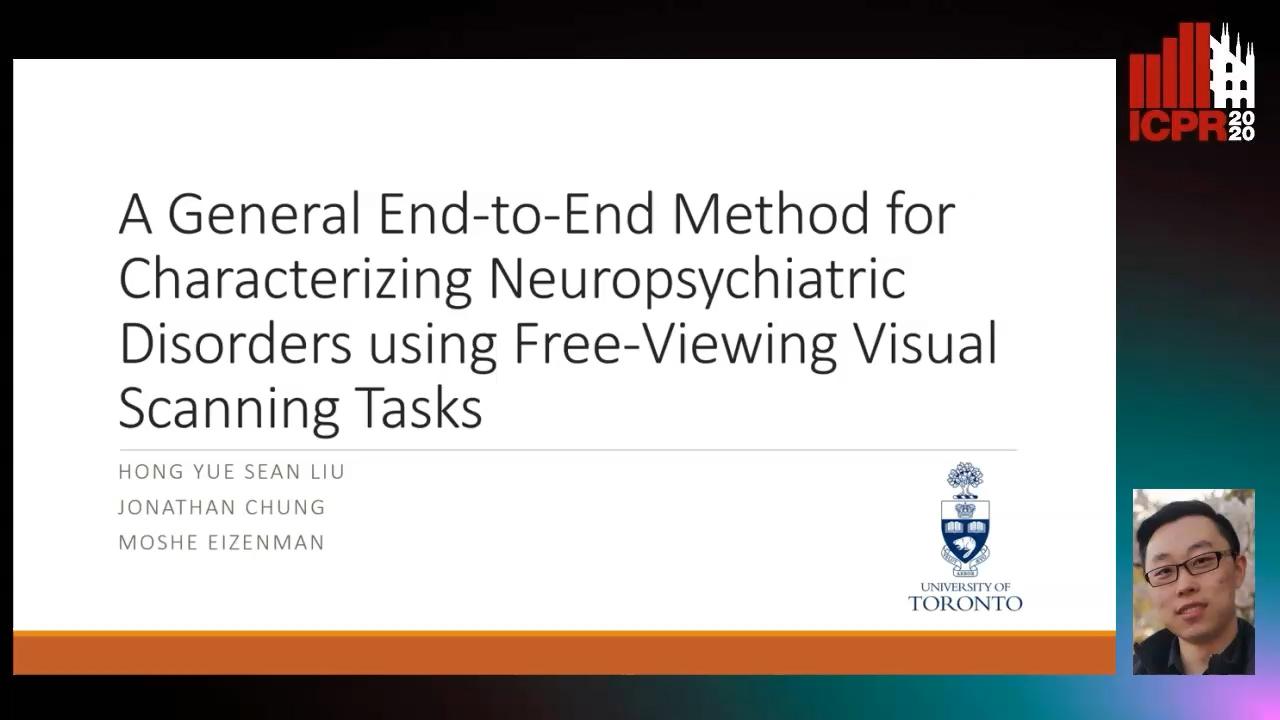Hong Yue Sean Liu
Paper download is intended for registered attendees only, and is
subjected to the IEEE Copyright Policy. Any other use is strongly forbidden.
Papers from this author
A General End-To-End Method for Characterizing Neuropsychiatric Disorders Using Free-Viewing Visual Scanning Tasks
Hong Yue Sean Liu, Jonathan Chung, Moshe Eizenman

Auto-TLDR; A general, data-driven, end-to-end framework that extracts relevant features of attentional bias from visual scanning behaviour and uses these features
Abstract Slides Poster Similar
The growing availability of eye-gaze tracking technology has allowed for its employment in a wide variety of applications, one of which is the objective diagnosis and monitoring of neuropsychiatric disorders from features of attentional bias extracted from visual scanning patterns. Current techniques in this field are largely comprised of non-generalizable methodologies that rely on domain expertise and study-specific assumptions. In this paper, we present a general, data-driven, end-to-end framework that extracts relevant features of attentional bias from visual scanning behaviour and uses these features to classify between subject groups with standard machine learning techniques. During the free-viewing task, subjects view sets of slides with thematic images while their visual scanning patterns (sets of ordered fixations) are monitored by an eye-tracking system. We encode fixations into relative visual attention maps (RVAMs) to describe measurement errors, and two data-driven methods are proposed to segment regions of interests from RVAMs: 1) using group average RVAMs, and 2) using difference of group average RVAMs. Relative fixation times within regions of interest are calculated and used as input features for a vanilla multilayered perceptron to classify between patient groups. The methods were evaluated on data from an anorexia nervosa (AN) study with 37 subjects and a bipolar/major depressive disorder (BD-MDD) study with 73 subjects. Using leave-one-subject-out cross validation, our technique is able to achieve an area under the receiver operating curve (AUROC) score of 0.935 for the AN study and 0.888 for the BD-MDD study, the latter of which exceeds the performance of the state-of-the-art analysis model designed specifically for the BD-MDD study, which had an AUROC of 0.879. The results validate the proposed methods' efficacy as generalizable, standard baselines for analyzing visual scanning data.